Last Updated: 01/10/2025
Choosing the Best Dog Carrier: A Vet Guide
Need the perfect dog carrier? Our vet-written guide helps you choose the best option for your dog's safety and comfort. We compare soft-sided, hard-sided, and backpack carriers, explain how to get the right size, and detail the rules for airline travel.
Author: Dr Gillian Hill BVSc (Hons)
Reading Time: 5 minutes - short read
Whether it's a quick trip to the vet or a cross-country adventure, a dog carrier is an essential piece of equipment for any dog parent. It's more than just a bag; it's a secure, personal den that keeps your dog safe during transport.
With so many styles on the market, choosing the right one can feel overwhelming. This guide will help you navigate the options and select a carrier that your dog will find comfortable and you will find reliable.
When do you need a dog carrier?
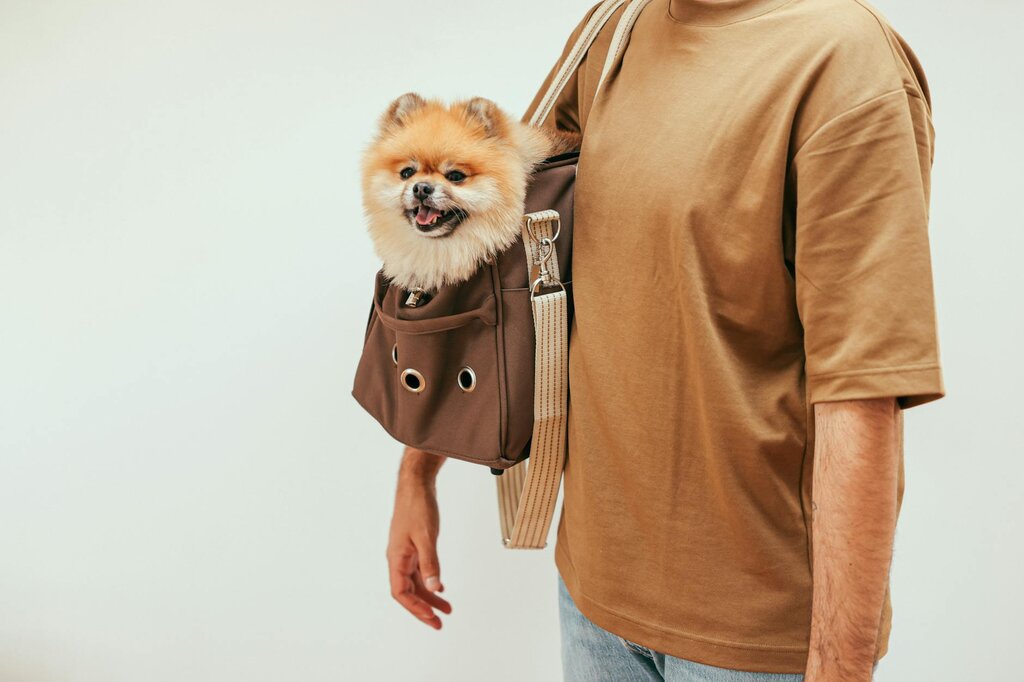
A high-quality, secure carrier is a valuable investment for small dogs, that comes in handy in many situations.
Travel
For car trips, a carrier prevents an unrestrained dog from causing distractions or becoming a projectile in a sudden stop. A carrier is essential for air travel and may be required on public transport.
Veterinary visits
In a busy clinic waiting room, a carrier offers a secure retreat for an anxious dog, helping to minimise stress and prevent unwelcome interactions with other pets. It is also particularly helpful for transport of dogs recovering from surgery or injury, as it helps to restricts movement.
Safety in public
For small or young dogs, a carrier offers protection in crowded places, preventing them from being stepped on or overwhelmed.
Emergencies
In an unexpected situation like an evacuation, a carrier ensures you can transport your dog quickly and safely.
Types of dog carriers
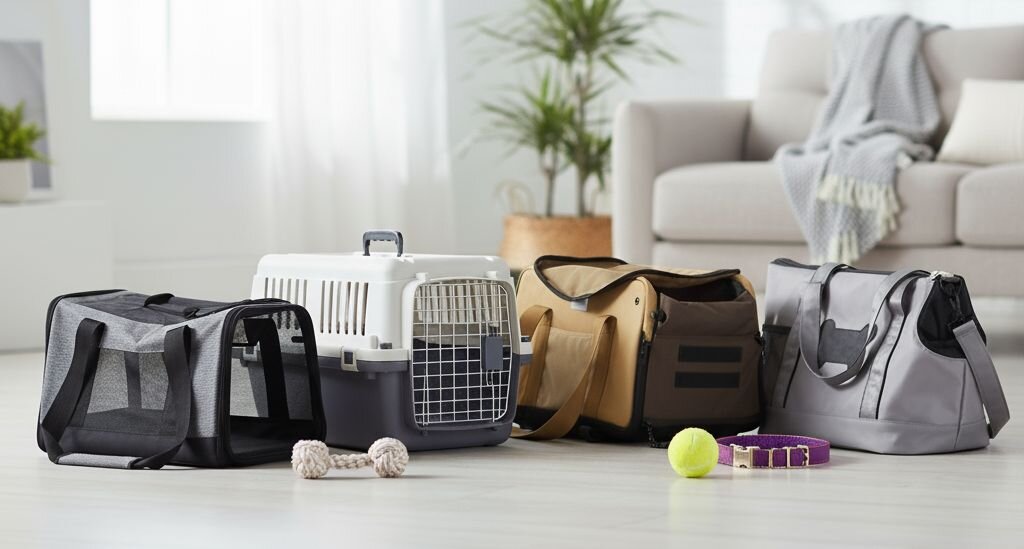
Each type of carrier is designed with a different purpose in mind. Understanding the pros and cons will help you choose the best fit for your lifestyle.
Soft Sided Carriers
Pros
- Typically made from durable fabrics like nylon or polyester
- Lightweight
- Easy-to-carry
- Can be folded for storage
- Flexible shape makes them ideal for fitting under airline seats
Cons
- Offer less protection than hard carriers
- Can be harder to clean thoroughly if soiled
Hard Sided Carriers
Pros
- Typically made from sturdy plastic with metal mesh or plastic doors
- Offer the best protection and security
- Durable
- Easy-to-clean
- Generally the only type approved for dogs travelling in the cargo hold of a plane
Cons
- Bulky
- Heavier
- Require more storage space
Soft Crates
A great compromise between soft and hard carriers is a fabric-covered model with a rigid internal frame.
This design adds structure and protection, yet remains lightweight, well-ventilated, and is often foldable for compact storage.
Backpacks and Slings
Pros
- Perfect for small dogs, puppies, or senior dogs with limited mobility
- Keep your hands free
- Being held close can be comforting for anxious dogs
Cons
- Poorly ventilated carriers can trap heat, increasing the risk of overheating
- Can put undue stress on a dog's spine and hips, particularly if they force a dog to sit in an upright position
Prams and Strollers
Pros
- Useful for longer journeys on foot
- Beneficial for dogs with arthritis, mobility issues, anxious dogs or those recovering from surgery
- Provide a comfortable and secure space
- May provide protection from the elements
Cons
- Potential for overheating
- More bulky to store than other carrier types
How to choose the perfect dog carrier
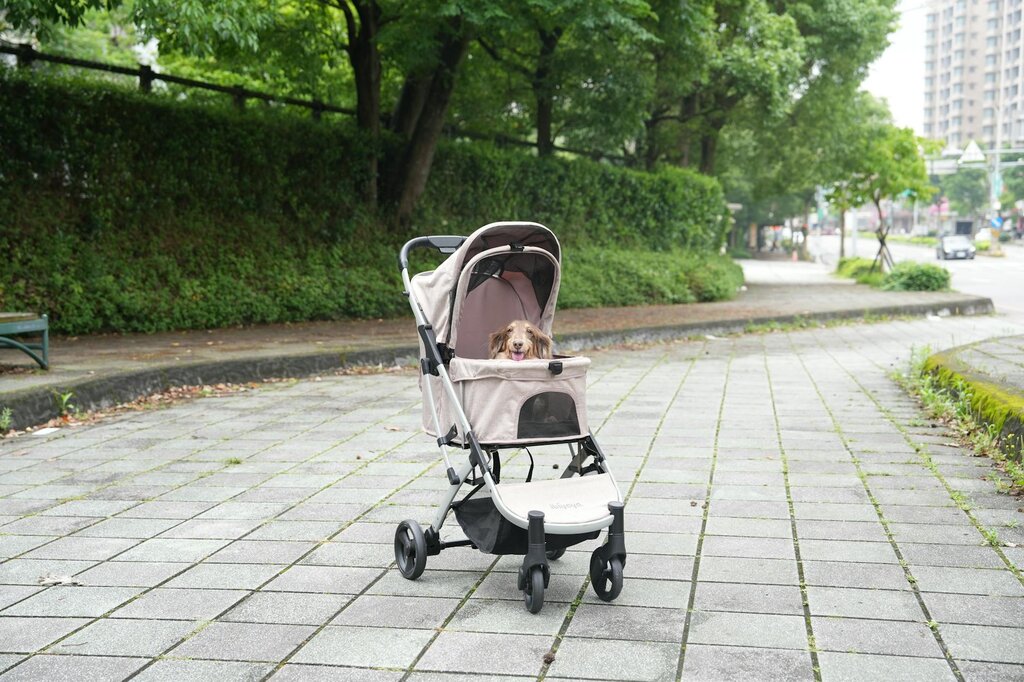
Selecting the right carrier comes down to three key factors: your dog's size, your intended use, and safety features.
Size and fit
A carrier that is too small will be uncomfortable, while one that is too large won't feel secure and can allow your dog to slide around during transit. The ideal carrier should allow your dog to stand up, turn around, and lie down comfortably.
Safety and comfort
Look for features that ensure you and your dog's wellbeing and comfort:
- Good ventilation from at least three sides
- Strong zippers
- Durable stitching
- Solid, waterproof base
- Padded shoulder straps or handles
Airline travel with your dog
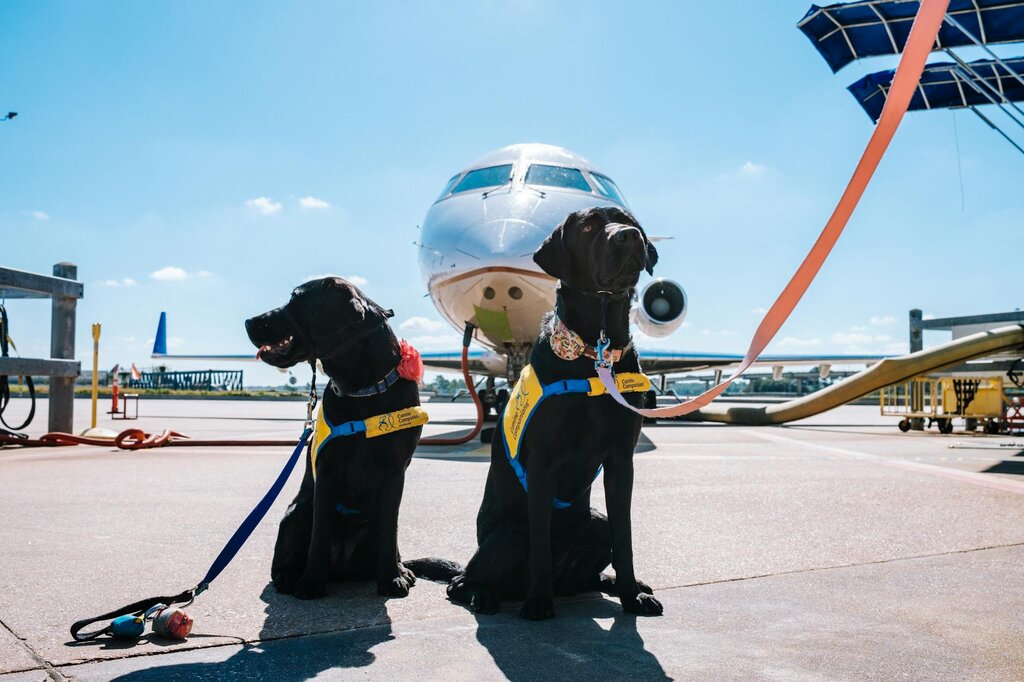
Flying with your dog requires careful planning, as each airline has strict and specific rules. Always check directly with your airline well in advance of your flight, as requirements can change.
For example, for in-cabin domestic flights with Virgin Australia, the requirements are very precise (the following information is correct at 1 October 2025):
- The carrier must be a soft-sided model
- It must fit completely under the seat in front of you, with maximum dimensions of 44cm (L) x 26cm (W) x 28cm (H)
- The combined weight of your dog and the carrier must be under 8kg
- The carrier must be well-ventilated, secure, and escape-proof, with a leakproof base lined with an absorbent mat
- You will also need a secure collar or harness and a lead, with minimal metal, for when your dog is out of the carrier at security checkpoints
Our soft-sided carriers featured above meet these requirements, but please be sure to check Virgin Australia's website for the latest requirements and for your specific flight.
For international travel or for dogs flying in cargo, you will likely need an IATA (International Air Transport Association) compliant hard-sided crate.
For more information, please read through our Guide to Flying with Your Pets.
Getting your dog used to the carrier
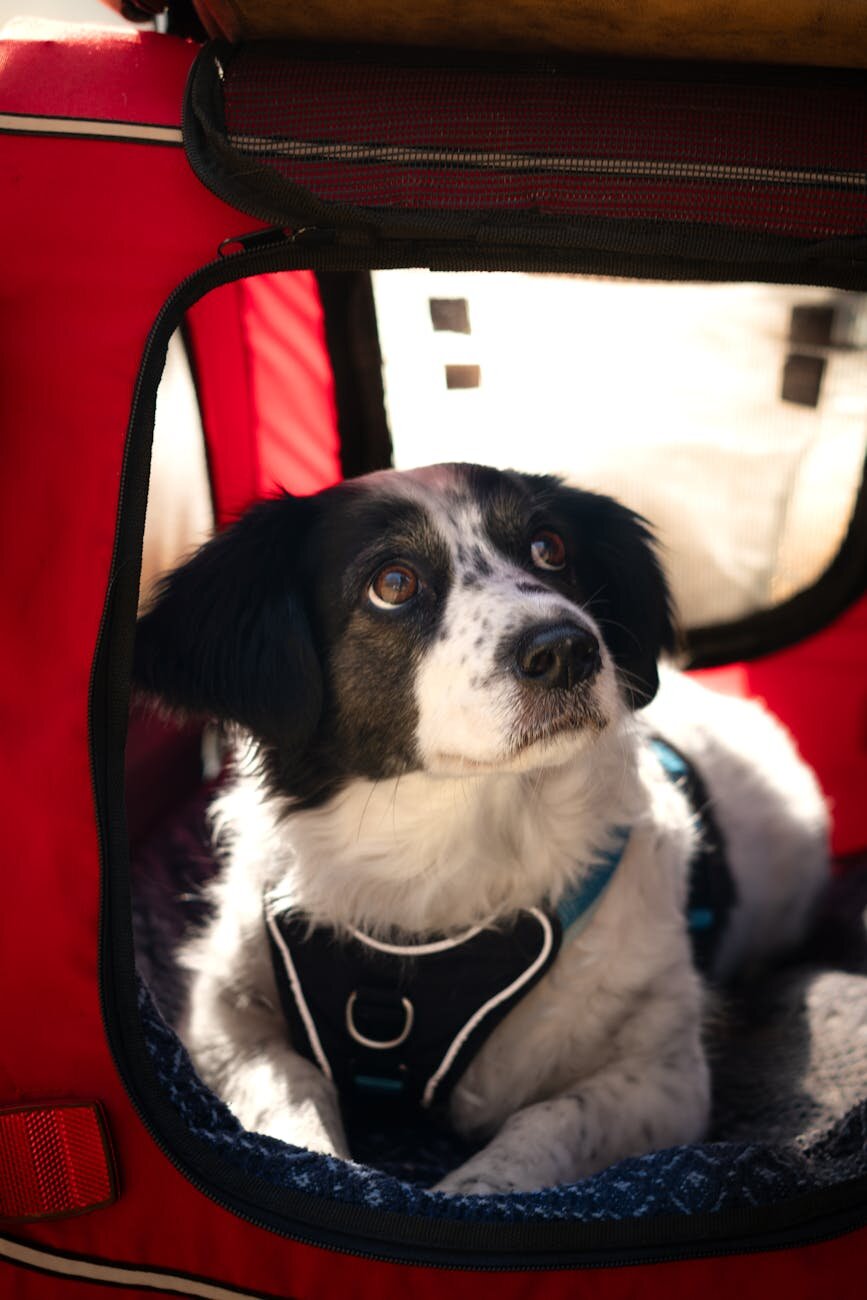
The key to stress-free travel is to create a positive association with the carrier long before your trip. Never use the carrier for punishment - this will only create a negative association and make your dog more stressed.
Introduce it early
Give the carrier a spray with Adaptil Transport Spray at least 15 minutes before you introduce it to your dog. Then, place the new carrier in a central part of your home, leaving the door open. Commence this process as long before your travel as possible.
Make it inviting
Put a comfy blanket, a favourite toy, and some high-value treats inside. Let your dog explore it at their own pace.
Positive reinforcement
Praise and reward your dog whenever they show interest or voluntarily go inside.
Short durations
Once they are comfortable, try closing the door for a few seconds, then open it and reward them. Gradually increase the time the door is closed, being sure to reward them for calm behaviour each time you open the door.
Practice trips
Start with short trips, like carrying them to another room, then progress to a short drive around the block. This helps them learn that the carrier leads to fun (or at least neutral) experiences.
The principles of crate-training are relevant for training your dog to love their carrier too! Check out our video below for more information!
For more information about making travel with your dog as smooth and enjoyable as possible, check out our Top Tips for Travelling with your Dog.
Choosing the right dog carrier is an investment in your dog's safety and your peace of mind. By focusing on the right size, purpose, and safety features, you can ensure your furry friend travels securely and comfortably, wherever your adventures take you.
Articles recommended for you
Our vet authored guide to the benefits of feeding your dog fresh food plus tips and advice for introducing it into their regular menu.
See our guide to protecting your pet from parasites from our vet team.
Thinking of getting a fish? Check out our guide for setting up a tank and home care tips!
Looking to understand horse feeds better? This comprehensive guide covers feeding recommendations for horses of all ages and disciplines.
Does your pet suffer from anxiety? Check out our Vet-guide for treatment options to help your pet.
History
Our experts continually monitor the health and wellness space and we update our articles when new information becomes available.
Wed 1 Oct 2025
Written by Dr Gillian Hill BVSc (Hons)Dr Gillian Hill BVSc (Hons)
Veterinarian
Dr. Gillian loves being able to provide depth and detail to pet parents questions, and give up to date, evidence based advice. She loves the variety of pets and inquiries she receives - she especially loves the 'curly' questions that require some research! Seeing the gorgeous photos that pet parents send through of their babies is a highlight of the day! Gillian enjoys to further her veterinary knowledge, and has completed further training in ultrasonography, behaviour and backyard poultry!

